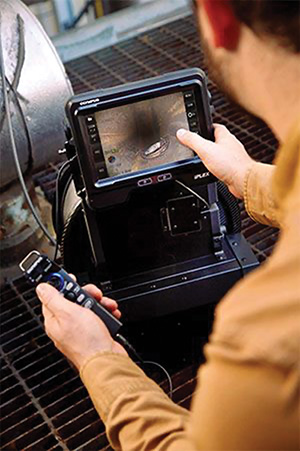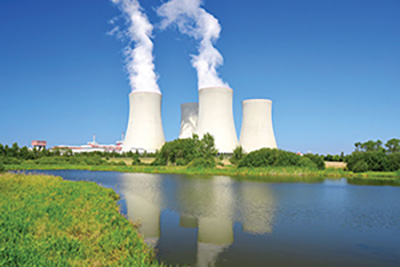Keeping a safe distance: mitigating radiation exposure for nuclear plant inspections using video borescopes
11/06/2024
Borescope inspections in nuclear power plants can play a crucial role in helping ensure the safety, reliability and regulatory compliance of the plant’s operations. They contribute to preventative maintenance efforts, assist in root cause analysis and help maintain a high level of operational efficiency. For personnel performing these inspections, time and distance are critical measurements for achieving a safe working environment and avoiding harmful radiation exposure levels. Ryan Sterling of Evident explains…
Minimising radiation exposure for inspectors in nuclear plants is crucial for protecting their health, ensuring compliance with regulations and facilitating safe and effective inspections and maintenance activities. When these critical inspections reveal suspected corrosion or blocked conduits or vessels in the containment area, they must be handled immediately to help avoid accidental radiation leakage. In some cases, the reactor may need to be shut down so that workers outfitted in full-body protective gear can carry out the inspection. However, remote visual inspection (RVI) offers an alternative to this method, helping avoid costly shutdowns, saving time and operational costs and reducing the risk of a harmful radiation dose for workers.
The Office for Nuclear Regulation, the UK’s independent nuclear regulator, imposes stringent guidelines to monitor and regulate nuclear facilities. It ensures compliance with safety protocols to minimise potential risks associated with nuclear materials and radiation. Workplace radiation exposure is meticulously regulated in accordance with these safety standards.
The as low as reasonably achievable (ALARA) principle is a fundamental approach in radiation safety, emphasising the need to minimise radiation exposure to the lowest achievable levels, without compromising the efficiency of plant operations. This principle requires continuous vigilance, employing advanced technologies and optimising work procedures to keep radiation doses well below established limits. Remote visual inspection technology has continued to evolve and provide a safer alternative for personnel to make their inspections from a sufficient distance to help decrease their annual effective dose level.
Industrial video borescopes are advanced inspection tools that enable inspectors to perform visual observations remotely via external camera-based equipment. The video borescope’s insertion tubes are used to access the target area, while video technology enables an inspector to analyse the area from a distance through a monitor. Image data can be viewed in real time on the screen and recorded for further assessment, analysis and reporting.
IPLEX video borescope systems offer inspectors the ability to quickly identify issues, facilitating faster decision-making and targeted maintenance. Evident’s industrial borescope technology delivers durable and manoeuvrable insertion tubes that can easily navigate complex structures within the plant. It offers IPLEX models with different configuration options and multiple insertion tube diameters and lengths to adapt to varying and challenging inspection conditions. Additionally, the captured video and images serve as valuable documentation for reporting, supporting thorough inspections that comply with regulations.
 | ||
| Evident’s IPLEX video borescopes enable remote visual observations via external camera-based equipment |
Time and distance are important factors for determining inspection conditions. Video borescopes equipped with a long insertion tube can enable the visual inspection of difficult-to-access locations, such as water conduits. The longer the insertion tube, the further away the workers can be from the radiation. The reactor vessel contains components crucial to the plant’s operation, but accessing these areas can be challenging due to high radiation levels. Video borescopes are deployed to visually inspect the reactor vessel internals, including the core shroud, control rod drive mechanisms and other critical elements. Inspectors can navigate the borescope remotely, capturing real-time video and images to assess the condition of these components without direct human entry into the high-radiation environment.
 | ||
| Borescope inspections help ensure the safety, reliability and regulatory compliance of a nuclear power plant |
Unfortunately, even the best video borescope equipment does not come out completely unscathed when exposed to radiation. If the insertion tube is used to inspect dirty-water-filled pipes, contamination is inevitable and damage is also a possibility. When the equipment is used in high-radiation areas, in some instances, decontaminating the equipment may be considered too costly and risky for the health of the workers. The plant may opt to sacrifice the insertion tube, leaving it permanently in the radiation area.
Regardless, the insertion tube and the videoscope need to be robust enough to satisfy the requirements and expectations of the nuclear plant’s safety inspection and maintenance programmes. This is why Evident builds systems, such as the IPLEX GAir video borescope, with features that enable them to survive longer in radiation areas.